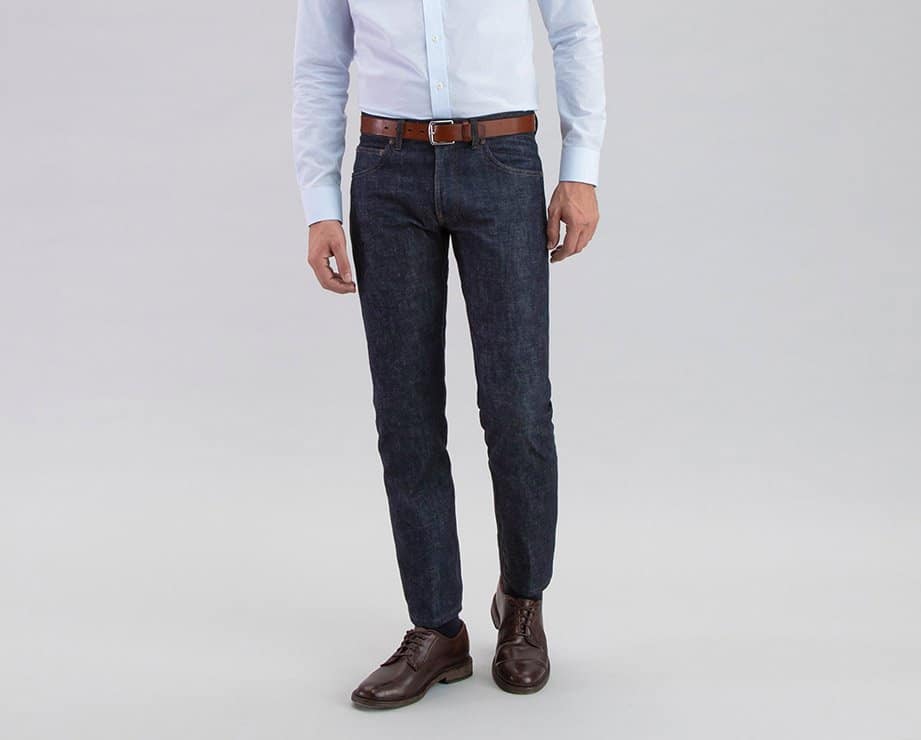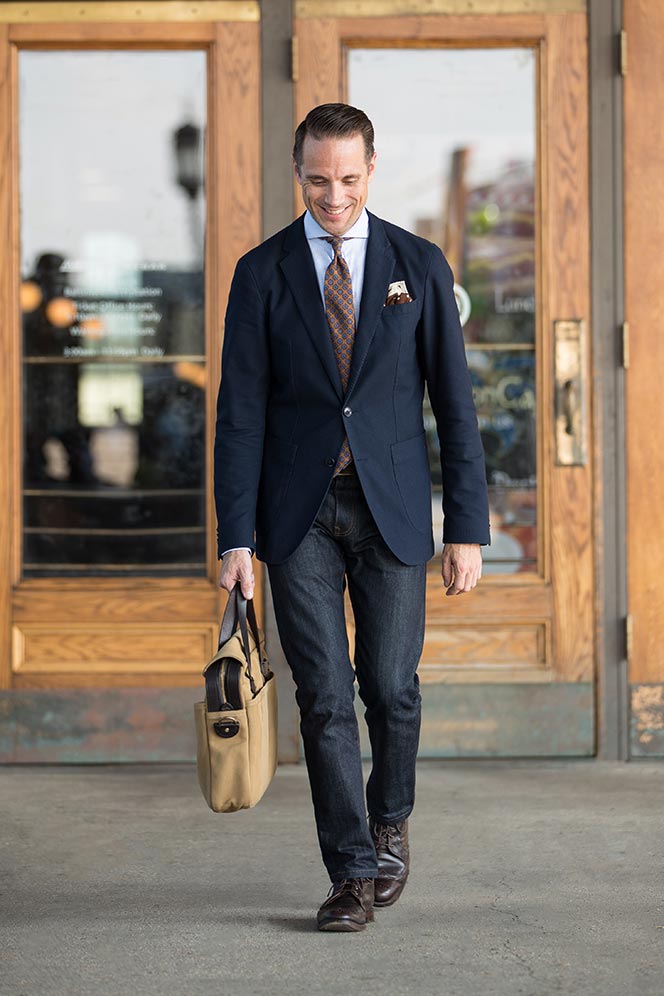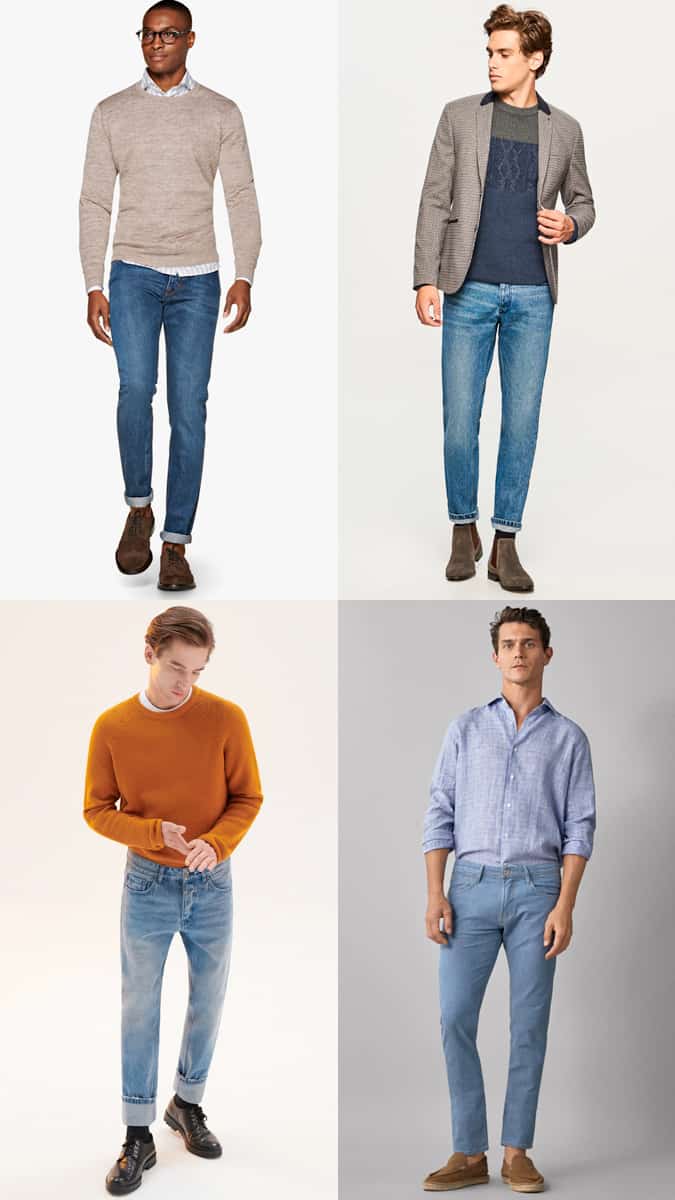
Introduction
Are jeans considered business casual – The evolution of workplace dress codes has been a significant shift, with many companies embracing the business casual attire that allows for more relaxed yet professional outfits. Jeans, once considered strictly blue-collar wear, have made their way into office environments. However, integrating denim into your business casual wardrobe requires an understanding of when and how are jeans considered business casual. Here’s are jeans considered business casual in the context of business casual attire.
1. Choosing the Right Jeans:
- Quality Denim: Invest in high-quality, well-fitted jeans in dark washes. Darker hues convey a sense of formality and are less likely to show wear and tear.
- Fit Matters: Opt for straight or slim-cut jeans that fit comfortably but are not overly tight. Bootcut or subtle flare styles can also work, especially when paired with appropriate footwear and tops.
2. Pairing Your Jeans Effectively:
- Professional Tops: Elevate your jeans with button-down shirts, blouses, or tailored sweaters. Layering with a structured jacket, cardigan, or blazer instantly adds sophistication.
- Sophisticated Footwear: Complement your jeans with polished shoes like loafers, ankle boots, or pumps. Avoid overly casual sneakers unless they’re sleek and minimalistic.
3. Occasions and Context:
- Casual Fridays: Fridays often allow for more relaxed dressing; however, remember that it’s still a workplace, so choose well-tailored jeans and combine them with professional-looking pieces.
- Company Culture: Observe and adhere to your company’s specific guidelines. If in doubt, take cues from senior colleagues or HR policies.
- Client Meetings: For important client meetings or presentations, consider saving your jeans for days when you don’t have external engagements, as traditional business attire may be more appropriate.
4. Accessorizing with Style:
- Minimalist Jewelry: Keep jewelry understated and refined. Classic watches, simple necklaces, or small earrings enhance your look without drawing too much attention away from your overall professionalism.
- Polished Bags: Carry a structured tote, satchel, or briefcase instead of a casual backpack or sling bag.
5. Attitude and Grooming:
- Grooming: Ensure your jeans are clean, pressed (if needed), and free from holes or excessive distressing. Personal grooming is key – neat hair, clean nails, and minimal makeup maintain a professional demeanor.
- Attitude: Remember that while jeans might be acceptable, maintaining a professional attitude and demeanor is crucial. Dressing appropriately sets the tone for how you approach your job and interact with others.
Jeans can indeed fit into a business casual wardrobe, offering comfort and versatility without sacrificing style or professionalism. The key lies in selecting the right type of jeans, pairing them thoughtfully with other elements of your outfit, and considering the occasion and your company culture. With these guidelines, you’ll confidently navigate the transition from blue collar to office chic with ease.

The evolution of office dress codes has introduced a new level of flexibility with the advent of business casual attire. However, this shift also brings confusion, especially when it comes to denim. The question remains: are jeans appropriate for business casual settings? This article aims to unpack the complexities surrounding this debate and provide clear guidance on how to incorporate jeans into your professional wardrobe without compromising on formality or respectability.
Defining Business Casual Attire
- Origins and Evolution: Trace the origins of the business casual concept and its transformation over time, highlighting how jeans have gradually made their way into the corporate fashion scene.
- Industry and Company Variations: Discuss how the acceptability of jeans in business casual attire can differ significantly between industries and even within individual companies. Offer examples of sectors where jeans are more common versus those where they may still be considered too informal.
- Setting the Standard: Define what generally constitutes business casual, focusing on key elements such as neatness, appropriateness, and professionalism that must be maintained regardless of whether jeans are worn or not.
Wearing Jeans in Business Casual Settings
- Choosing the Right Jeans: Explain the importance of selecting the right type of jeans – clean, well-fitted, dark washes are often preferred due to their sleek and polished appearance. Distressed, overly ripped, or excessively faded jeans should typically be avoided.
- Pairing Jeans with Professional Pieces: Showcase suitable tops, blouses, sweaters, and jackets that elevate jeans to meet business casual standards. Emphasize layering and accessorizing to create a sophisticated look.
- Footwear and Accessories: Highlight the role of footwear and accessories in making jeans work-appropriate. Shoes like loafers, pumps, or clean sneakers can complement jeans while maintaining a professional demeanor.
Special Considerations and Occasions
- Client Meetings and Presentations: Address when and how to appropriately wear jeans during client-facing situations, suggesting that one might opt for dressier alternatives on such occasions unless there’s a known casual culture or explicit permission.
- Company Events and Culture: Reflect on company-specific norms and events where jeans might be more or less acceptable, emphasizing the need to understand and adhere to the unspoken rules and expectations.
While jeans have become more widely accepted in many business casual environments, the decision to wear them requires thoughtful consideration of your workplace culture, the specific event, and the image you want to project. With careful selection and strategic styling, jeans can indeed be an integral part of a polished, professional business casual ensemble. Ultimately, the key is to strike a balance between comfort, personal style, and the established norms of your workplace.

In today’s ever-evolving workplace culture, the question of whether jeans are acceptable in a business casual environment has sparked ongoing discussions and debates. The traditional norms of corporate attire have significantly relaxed over the past few decades, leading to a more flexible definition of what constitutes “business casual.”
On one side of the debate, proponents argue that jeans can be a part of a professional yet comfortable ensemble, especially in creative industries or tech companies where innovation and ease of expression are highly valued. They maintain that well-fitting, clean, and not overly distressed jeans paired with a smart top, blazer, or dress shoes can project a polished and put-together look suitable for the office.
The opposing viewpoint,
however, asserts that jeans may still be too informal for certain professional settings,
particularly in more traditional or client-facing roles where a formal dress code is expected to convey respect and authority.
In such environments, adhering to a stricter business attire policy might be seen as a way to uphold professional standards and maintain a clear line between work and leisure.
Conclusion
Ultimately, the acceptability of jeans in a business casual environment depends on the specific company culture and its dress code policies.
Employers are encouraged to provide clear guidelines to employees, taking into consideration the nature of their business, the expectations of clients
and the comfort and productivity of their workforce.
It’s essential for employees to understand these guidelines and use good judgment when deciding on their work attire.
As workplaces continue to modernize and adapt to changing attitudes towards dress codes
the ‘jeans debate’ will likely persist, reflecting the dynamic interplay between personal style, professionalism, and evolving social norms. 